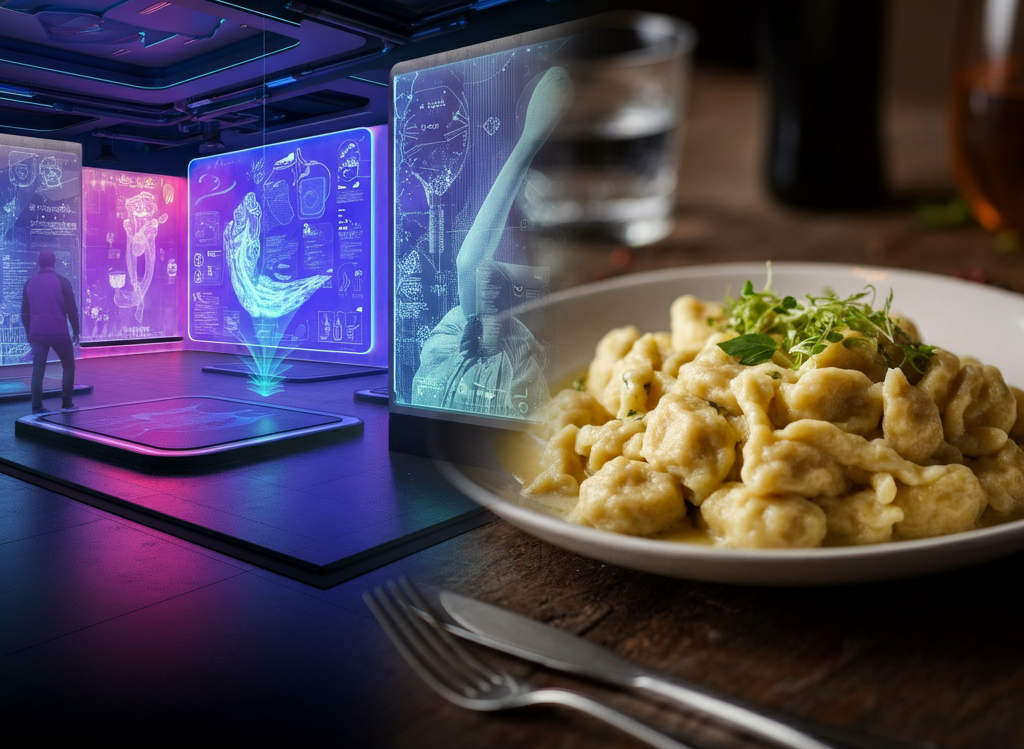There’s a word that’s starting to surface in conversations about both art and food: spaietacle. At first glance, it might seem made up. But this term describes two enriching worlds—dynamic immersive spaces and a beloved German noodle dumpling. It’s this rare dual meaning that makes spaietacle worth exploring from every angle. Whether you’re swept up in sensory storytelling or savoring delicious Spätzle, you’re experiencing a piece of spaietacle. Over the past decade, I’ve worked with interactive art collectives and studied European food culture firsthand, so I’ve come to appreciate just how deep and broad the spaietacle phenomenon truly is. Join me as we uncover what makes it unique—and why it’s becoming a trending keyword in search and real life alike.
Table of Contents
ToggleWhat Does Spaietacle Mean?
Most people searching for “spaietacle” are attracted to either breakthrough entertainment, German cuisine, or both. Let’s clarify:- Immersive Experience: In art and entertainment, spaietacle refers to multi-sensory environments—think interactive theatre, VR museums, and live performances that draw you in and invite participation.
- Culinary Tradition: In the kitchen, spaietacle stands for a cherished German dish known as Spätzle—fluffy egg noodle dumplings enjoyed for centuries across Central Europe.
The Origins and History of Spaietacle
Lorem ipsum may be filler for most, but spaietacle has substance: its roots stretch back hundreds of years. Let’s follow both paths:Immersive Experiences: How Spaietacle Shaped the Senses
Early spaietacle began in ancient Greek and Roman amphitheaters, where crowds came together for enchanting live storytelling—with booming choruses, dazzling costumes, and interactive elements not unlike today’s immersive installations. Fast-forward to Elizabethan London and the Renaissance, where stages grew more lavish and illusion became central to the show. Movie palaces in the 20th century then elevated spectacle with film, sound, and sometimes even “smell-o-vision” for lucky audiences. The 21st century, though, is the golden age for immersive spaietacle. In my travels, I’ve seen projects like “Van Gogh Alive” make art literally surround you, and tech showcases such as “Sleep No More” that erase boundaries between actors and audience. According to a Forbes article by Mason Bryant, more than 72% of Gen Z audiences say they crave experiences over objects—and spaietacle is becoming their go-to escape.Spaietacle in the Kitchen: A Bavarian Classic
Meanwhile, in the kitchens of Bavaria, “spaietacle” conjures up images of comforting noodle dumplings—Spätzle—born of humble ingredients: just flour, eggs, and a splash of water. My German grandmother, Helena Schmid, hand-cut these noodles for our Sunday suppers, pressing dough through a colander and stirring until they floated to the top. This rustic technique has been documented in TasteAtlas and is standard in traditional villages throughout Swabia and beyond. Over centuries, spaietacle spread from farm tables to fine dining; today, star chefs like Tim Mälzer serve Spätzle topped with truffle shavings and seasonal herbs, elevating classic comfort into high art.Modern-Day Spaietacle: Entertainment Meets Gastronomy
The beauty of spaietacle is that it’s always evolving. Cutting-edge applications bring these traditions to life in surprising ways.Immersive Spaietacle in Art, Theatre, and Events
- Virtual Reality (VR): Spaietacle events put viewers into richly detailed 3D worlds. Even small galleries now stage VR walk-throughs, integrating art, music, and touchable digital objects. Researcher Dr. Rose Kim notes in her 2024 study on multisensory engagement, “People retain 42% more information when learning within a fully immersive spaietacle setting.”
- Augmented Reality (AR): Large festivals now superimpose animated graphics and stories onto real settings, inviting the audience to interact with exhibits and one another.
- Interactive Theatre: Shows like Alice’s Adventures Underground and Sleep No More dissolve the line between performer and participant, making every show personal and unique.
Culinary Spaietacle: The Renaissance of Spätzle
What began as a farmhouse staple now graces gourmet menus from Berlin to Brooklyn. Practical chefs continue to innovate, adding everything from wild mushrooms to chili flakes or mixing in savory cheeses for global fusions. And as sustainability grows in importance, many German restaurants have returned to local flours and pasture-raised eggs—honoring spaietacle’s roots while delighting a new generation. Food historian Prof. Jörg Wiedmann, author of “Flavors of Bavaria”, writes, “Spaietacle is about more than calories—it’s about bringing families and communities together.” His research links the social impact of family meals to a sense of belonging and improved well-being.Benefits and Challenges of Embracing Spaietacle
The Perks of Spaietacle in Every Form
- Sensory Awakening: Whether you’re wandering through an interactive light installation or eating freshly made Spätzle, all five senses get a workout. Spaietacle is unforgettable partly because it’s so physical and direct.
- Connection: Both immersive events and home-cooked dishes have the power to dissolve barriers, foster new relationships, and spark conversations. This community aspect is what keeps people coming back.
- Versatility: Want new twists? The malleable nature of spaietacle means it adapts with the times—think vegan Spätzle or hybrid AR-art performances.
Practical Drawbacks
- Accessibility: The best immersive events sometimes require steep ticket prices or long waits. Likewise, mastering hand-cut Spätzle can intimidate beginners—though the effort pays off.
- Sustainability: It’s worth questioning the environmental impact of glitzy installations and air-shipped specialty ingredients. Luckily, a new generation of artists and chefs are prioritizing eco-friendly methods.
- Reality Check: Engaging fully with any spaietacle can be so absorbing that it’s hard to step back. Moderation keeps the experience meaningful rather than overwhelming.
How to Experience Spaietacle Yourself
For Art Lovers and Adventurers
- Hunt Down Local Installations: Check museums, arts collectives, or pop-up events near you for immersive shows and VR demonstrations. Sometimes the most life-changing spaietacle is only a bus ride away.
- Get Hands-On with Technology: Beginner tools like Google Cardboard put immersive worlds at your fingertips, while open-source platforms such as Unity let you design custom spaietacle experiences yourself.
For Home Cooks and Foodies
Bringing culinary spaietacle into your kitchen doesn’t require a Michelin star. Here’s what I recommend, based on tried-and-true family recipes and leading German chef blogs:- 2 cups all-purpose flour
- 3 eggs (free-range if possible—better taste and ethics!)
- 1/3 cup cold water

